Automotive head unit
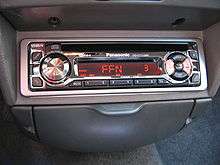
_Head_Unit.jpg)
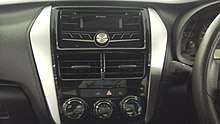
An automotive head unit, sometimes referred to as a deck, is a component of an automotive infotainment, which provides a unified hardware interface (mainly, the screen and buttons) for the entire system.
Antiquated names for head unit are receiver, in-dash stereo or dash stereo.
Function
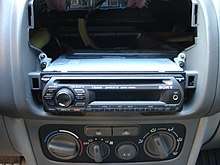
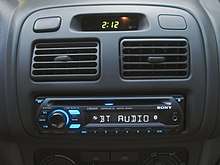
The head unit is the centerpiece of the car's sound and information system. Typically located in the center of the dashboard, modern head units are densely integrated electronic packages housed in detachable face plates. As high-end head units are common targets for theft, many head units are typically integrated into the vehicle's alarm system.
Head units give the user control over the vehicle's information and entertainment media: AM/FM radio, satellite radio, DVDs/CDs, cassette tapes (although these are now uncommon), USB MP3, Dashcams, GPS navi, Bluetooth, WiFi etc. Many audio-only head units afford the user precise control over detailed audio functions such as volume, band, frequency, speaker balance, speaker fade, bass, treble, EQ and so on.[1]
Several OEMs such as General Motors are integrating more advanced systems into vehicle's head units such that they can offer vehicle data such as trouble warnings; such a head unit thus serves as a secondary instrument panel.
In as much as head units are a central part of a car's decor, they vary as widely in aesthetics as they do in functionality.
Screens
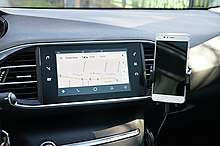
With the advent of dashcams, GPS navi and DVDs, head units with video screens are on the market.
Voice control and gesture recognition are used for them.
Size standards
The most standard sizes for car audio head units and enclosures is ISO 7736:
- Single (180x50 mm) in Europe, South America and Australasia
- and Double (180x100 mm) in Japan, the UK and North America. Double DIN is also written as 2 DIN and double din.
ISO 10487 is the standard for connectors for the head unit to the car's electrical system.
Steering and aftermarket brands
Most manufactures offer DIN headunits and standard connectors (called universal headunits), including Pioneer, Sony, Alpine, Kenwood, Eclipse, JVC,[2] Boyo, Dual, Visteon, Advent and Blaupunkt.[3]
See also
References
- ↑ "How important is your car stereo to you". Head unit. Car stereo reviews. Retrieved 2012-01-03.
- ↑ OEM Steering Wheel Control for aftermarket radios
- ↑ pac-audio.com Archived 2014-03-06 at the Wayback Machine.
External links
- MPT 1362 UK code of practice for the installation of mobile radio and ancillary equipment in land based vehicles. Federation of Communications Services Industry, November 2005.
- 2 Din In-Dash Headunit